A matured planted tank is a self-sustaining aquarium with a balanced ecosystem and lots of bacterial biodiversity in the filter, plants, and substrate. Owing to its complexity, initiating a tank with a proper nitrogen cycle and maturation process is already quite challenging, and maintaining it is more so.
The point of a self-sustaining tank contradicts the claim of a diligent maintenance routine. However, a mature planted tank would require much less involvement in filtration and water changes than tanks with minimal to no substrate and plants.
In this article, we’ll go through the elements of a planted tank and shed light on how to maintain them efficiently.
Table of Contents
Water Parameters
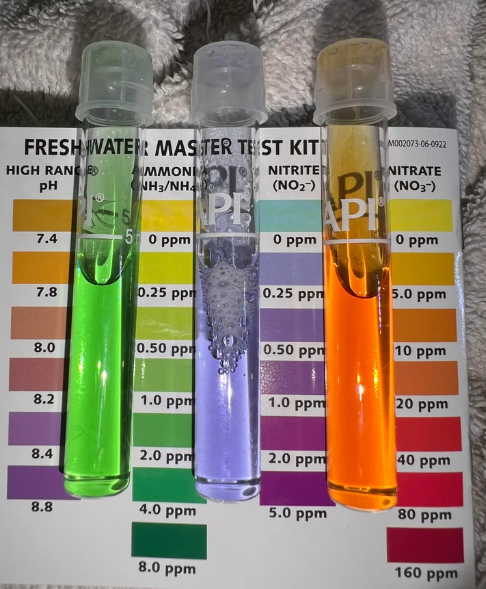
Providing your aquarium inhabitants, both plants and fish, with optimal water conditions is necessary to continue enjoying your well-established tank. Planted tanks require maintaining 5 key elements that can tip the ecological balance if disrupted. Aside from temperature, these elements include:
pH Level
Water pH level is the indicator of how acidic or basic the water is to RO/DI water. With RO water typically revolving around pH 7, acidic water is identified by a reduced value, and basicity is measured with an increasing number.
For planted matured tanks with tropical fish, a pH level of 6.5 to 7.5 is generally suitable, with slight adjustments made as required to suit different fish and plant species.
If you haven’t performed any major actions like massive water changes or chemical infusion, a matured planted tank is expected to maintain its pH levels quite efficiently. However, you must monitor the pH levels intermittently to ensure stability.
Tips to adjust pH level in planted tanks:
- Use RO/DI water during water changes to stabilize and buffer the pH levels.
- Use crushed coral or dolomite gravel in the aquarium. Calcium-carbonate slowly dissolves in the water to raise pH.
- Use boiled driftwood as decoration to lower and buffer pH levels.
- Ensure proper aeration and movement in the tank to maintain desired pH levels.
- Clean the substrate and filters regularly to avoid pH spikes from occurring.
Apart from these, you may consider placing more plants to help with filtration and pH stabilization.
Water Hardness
Both general hardness (GH) and carbonate hardness (KH) are critical for the survival of fish and plants in matured tanks. The GH level refers to the dissolved minerals, predominantly calcium and magnesium, in the water, and the KH levels represent the alkalinity of the water.
Tropical plants and fish typically thrive in soft to moderately hard water and they’re more sensitive to KH rather than GH. pH also has a direct relationship with KH. If a water sample is low on KH, it probably is acidic and susceptible to rapid changes.
However, some fish species, such as African cichlids, can only be kept in very hard water along with plants like Vallisneria. Wild caught Discus and livebearers also often prefer relatively hard water. For general breeding purposes, comparatively higher water hardness is recommended to fulfill the calcium demands of the egg-laying females.
Similar to pH regulation, using RO/DI water, adding driftwood, and introducing sources of calcium carbonate often resolve the hardness issues in mature planted tanks.
Ammonia and Nitrate Levels
Ammonia, which is highly toxic to fish, is generated through organic waste and poop in the water. Beneficial bacteria living in your filter and substrate break the ammonia to produce nitrite and nitrate, which are only toxic in higher concentrations.
Plants, in contrast, consume the excess ammonia and nitrate to produce nutrients for their growth.
While the paradox exists, you shouldn’t aim to benefit the plants by refusing to remove nitrogen compounds and risking the well-being of your fish. Proper lighting and fertilizers can easily offset the lack of these toxic compounds.
Perform routine checks for ammonia, nitrite, and nitrite levels in your tank during maintenance cycles. If any of these rise to dangerous levels, perform water changes and ensure the bio-filtration system is properly working.
Carbon Dioxide
Aside from light and water, carbon dioxide is another critical component for photosynthesis—making it essential to be present in the water for plants to survive. A low amount of dissolved CO2, albeit always, remains present in water.
However, if it’s present in a high concentration that’s replacing the dissolved oxygen, it may cause issues for your fish.
In lightly stocked aquariums with a lower carbon dioxide demand, you may not need to infuse CO2 into the water. But in aquariums with higher demand, you need to administer CO2 dosing to maintain the well-being of the plants.
Nevertheless, 20 mg/l CO2 for a moderately stocked aquarium with adequate lighting and average plant growth should be adequate. A higher concentration of 30 mg/l is advisable for tanks with high-lighting and fast-growing stems.
Fertilizer and CO2 Infusion
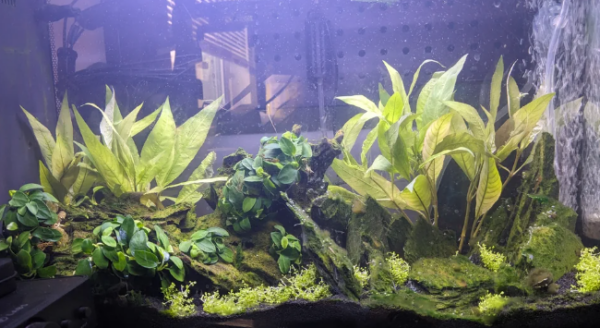
Nitrogen, phosphorus, potassium, iron, and manganese are among the most essential nutrients necessary for the plant population. Fertilizers deliver them to your aquatic plants through either the root systems or by dissolving in the water. During your regular maintenance schedule, ensure that the plants are getting enough nutrients without gambling your fish’s health.
Plant Nutrient Requirement
Different plant species have varying requirements for the essential nutrients. For example:
- Dwarf Baby Tears have high light and CO2 requirements.
- Amazon Swords are large and robust plants with moderate nutrient requirements.
- Java Fern can thrive in low to moderate-nutrient environments. It extracts nutrients from the water column.
- Anubias are slow-growing plants that can thrive in low to moderate nutrients.
- Java Moss can grow in low-nutrient conditions. It primarily relies on nutrients from the water column.
- Duckweed reduces nitrate from aquariums and has a low to moderate nutrient demand.
- Most carpeting plants have moderate to high nutrient requirements.
Decide on whether or not to administer fertilizers by monitoring the plants and understanding their nutrient demands.
Choosing a Fertilizer
Most mass-market fertilizers, those from Seachem and API, fulfill most of the nutrient demands of plants. While most of them include a variety of elements ranging from phosphorus to iron, some of them focus on a single nutrient suitable for a particular species of plant. Choose a fertilizer that suits your plant requirements and your aquascaping style.
Dosage Guidelines
Typically, weekly doses are recommended for moderately stocked plants. The amount, however, will vary depending on the product. The dosing instructions must be present on the bottle.
If you have an ecologically balanced tank, meaning your fish and plants effectively exchange nutrients, you may stretch the gap between each fertilizer dosing.
Root Tabs
Root tabs are specifically designed for plants with roots submerged in the soil. These tabs slowly dissolve in the soil and water to deliver necessary nutrients to the plants. In contrast to fertilizers that may be overdosed and cause harm to fish, root tabs are much more convenient and safe to use.
However, root tabs fail to supply nutrients to floating plants.
CO2 Infusion
As mentioned, demanding plants often require additional CO2 to thrive in artificial waters. There are primarily two ways to add CO2 to your aquarium:
- Pressurized CO2 System
In this method, CO2 cylinders are used with a regulator and a diffuser. Additional accessories, such as bubble counters and drop checkers, also are used in high-tech setups. The regulator regulates the output of CO2 gas delivered to the tank through the diffuser submerged in the water.
It allows precise control over CO2 levels and is suitable for highly stocked planted tanks.
- Liquid Carbon Supplement
These products usually contain compounds like glutaraldehydes as a source of organic carbon. The liquid chemicals are dosed directly into the water as per the instructions. These products also release carbon dioxide gradually, but you’ll have less control over it.
Aquascaping
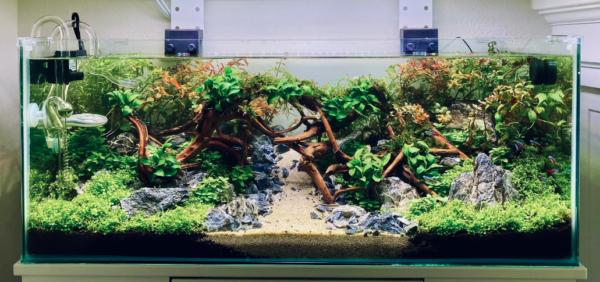
A matured planted tank, with sufficient nutrients and lighting, can grow exponentially and outgrow the tank in a few weeks. Aquascaping for planted tanks, although not limited to it, revolves around trimming, pruning, and removal of dead leaves. Here is how to do it:
Know Your Plants
Some plants have a higher growth rate than others. As an aquarist, you’re expected to know about their strategic potential in aquascaping and how fast they send their runners to seize space. Here is a quick overview of a few common aquarium plants:
- High-Growth Rate Plants:
- Hygrophila polysperma
- Hygrophila corymbosa
- Water Wisteria (Hygrophila difformis)
- Brazilian Pennywort (Hydrocotyle leucocephala)
- Medium-Growth Rate Plants:
- Java Fern (Microsorum pteropus)
- Anubias species (Anubias barteri, Anubias nana)
- Cryptocoryne species (Cryptocoryne wendtii)
- Low-Growth Rate Plants:
- Java Moss (Taxiphyllum barbieri)
- Bucephalandra species (Bucephalandra sp.)
- Anubias Petite (Anubias barteri var. nana ‘Petite’)
In case you’re introducing new plants to the matured tank, a quick study on their characteristics often proves beneficial.
Introducing New Plants
New plants often bring parasites and hitch-hiking crustaceans into the tanks. They may also be sensitive to the parameters of your matured aquarium.
Therefore, to keep your existing plants safe and to mitigate the other initial issues, you need to perform a few initial steps before introducing the new plants to the setup:
- Quarantine
Quarantine your new plants in an isolated container for a few days, preferably for a couple of weeks, to prevent the introduction of unwanted pests and diseases.
- Inspect and Prepare
Inspect for any hitchhiking snails, rotting leaves, or dead stems. Use tweezers to remove the unwanted components from the plants.
- Acclimate
Slowly and gradually add water from your main aquarium over a few hours, replacing the quarantine tank water. For convenience, you may float the smaller quarantine tank over the main aquarium and replace the water.
- Aquascaping
Research your new plant beforehand and learn about its lighting requirements. Plant it accordingly and as per your desired visual layout.
- Monitor and Adjust
Keep an eye on your new arrivals and overall tank health in the following weeks. Administer fertilizers, root tabs, and CO2 injections as required to ensure optimal conditions.
Filtration System
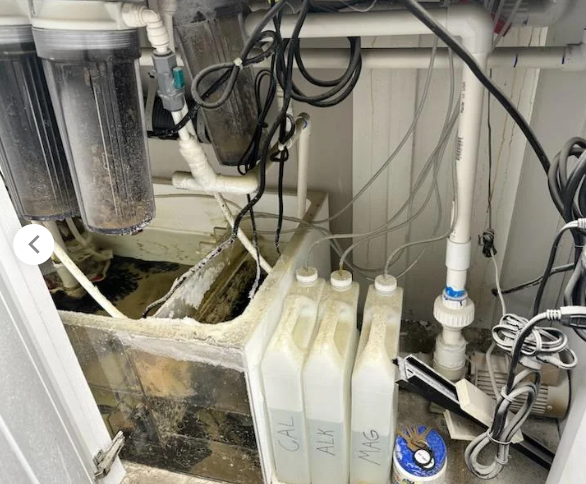
Depending on your setup, you may primarily have three kinds of filtration systems. A mechanical filtration system, a biological filtration system, and a chemical filtration system. A chemical filtration system, however, is not advisable for matured planted aquariums.
Cleaning Mechanical Filter Media
Remove the filter media, such as coarse sponge and filter floss, and vigorously clean them with dechlorinated water. You don’t need to use aquarium water, but you may as well.
You also can replace mechanical filter media anytime you want, as they don’t house beneficial bacteria as much as biological filters.
Cleaning Biological Filter Media
Bio media primarily houses beneficial bacteria and needs to be gently tumbled in the aquarium water. Don’t scrub the biofilm off of them. Gradually replace the bio media over a few weeks—allowing the beneficial bacteria colonies to resettle.
Substrate Maintenance
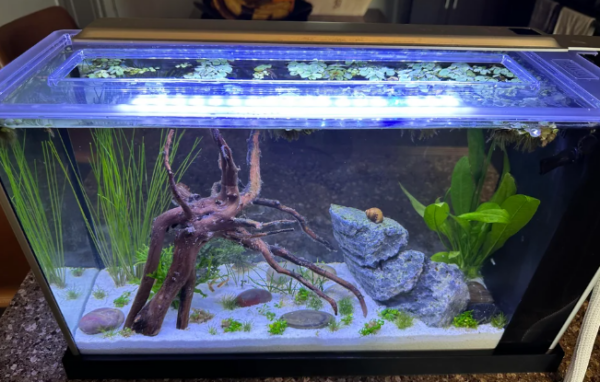
Substrates are an integral part of a matured planted tank. Aside from nurturing beneficial bacteria, a potent substrate fulfills the nutrient demand of the plants and occasionally shelters burrowing creatures that live beneath the bed.
A few key elements that need to be considered while maintaining or replacing the substrate include:
Substrate Depth
Over time, the nutrient content of the substrates depletes, and you may need to replace them. While it’s best to replace a portion of substrate at a time, you need to maintain a proper substrate depth for the plants to thrive.
Typically, a 2-3 inches substrate depth, infused with root tabs and fertilizers, is advisable for matured planted tanks. Aquarium soil is arguably the best substrate for planted tanks, but you may layer it with an inch of fine sand if you have burrowing fish.
Substrate Vacuuming
Eventually, organic debris will accumulate on and inside the substrates. The accumulations often oversaturate the water with nutrients and ammonia—causing algae bloom and plants to overgrow.
While disturbing the bacteria and agitating the substrate to a great extent is not recommended for matured planted tanks, you should vacuum the substrate occasionally to eliminate the rotting debris. Agitating the substrate may release toxic gas and disturb the fibrous root system of the plants.
During maintenance, remove the dead leaves from the tank. Don’t forget to remove the trimmed and pruned leaves that may accumulate in the substrate and raise the bioload.
Aeration
A mature and stable substrate bed often ends up trapping gas bubbles inside. Oxygen-rich water also fails to nurture the substrates due to compaction. Aerating the substrate, which is essentially poking (not agitating) it with a pointy stick, can release the bubbles and allow water to flow through the root systems and the bacteria colonies.
Algae Control
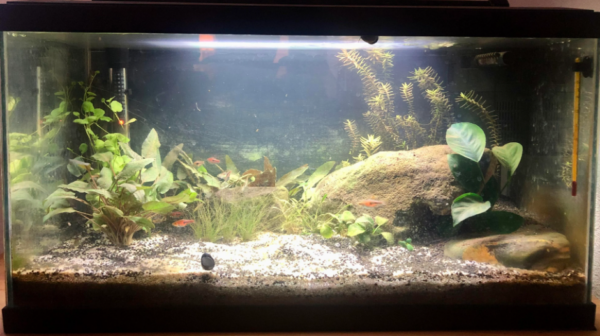
Algaes are considered an indication that an aquarium is healthy. While not harmful, algae bloom can snatch away essential nutrients from the plants and disrupt the ecological balance. Overgrown algae on the glass and plants may also restrict the light from reaching the depths.
Here are a few methods you may employ to control algae growth:
– Balanced Lighting
Algae are similar to plants in terms of energy production. They require consistent lighting to propagate. Balancing the lights to deliver 8-10 hours of daylight may mitigate the issue and allow plants to consume the excess nutrients.
– Consistent CO2 Levels
Monitor the CO2 levels in the tank constantly and regulate the CO2 flow accordingly to control algae growth. Oversaturation of CO2 boosts algae production and may also harm the active inhabitants of the tank.
– Good Water Circulation
Ensure good water circulation through the tank for even distribution of the nutrients. Adjust the flow outlets to reach every corner of the tank and keep it at a flow rate that doesn’t disturb the plants or constantly agitate a particular area in the substrate.
– Algae-eating Fish and Invertebrates
Introducing a few algae-eating fish and invertebrates may also help you control algae growth in the tank. However, these creatures, such as snails and common plecos, typically grow rapidly and reproduce a lot. Snail infestations are not unheard of in the planted tank community.
– Avoid Excess Fertilizer
Over-enthusiastic use of fertilizers, aside from harming the fish, can cause algae bloom in the tank. Refrain yourself from disregarding the dosing instructions and harming the balance of your matured planted tank.
FAQs
Maintain your planted aquarium with regular water changes, sustaining optimal water parameters and administering fertilizers when required. Occasional trimming, pruning, and substrate maintenance may also be beneficial.
Maintaining planted tanks can be moderately challenging because of their sensitivity to water quality, lighting, and demand for nutrients.
With proper planning and maintenance, a matured planted tank can last for decades and even a lifetime.
The Bottom Line
Tank maintenance can be challenging. For you to remember the key elements, we’ve compiled a maintenance list for matured planted tanks and discussed them in detail. Hopefully, you’ll not have any further issues comprehending how to maintain your matured planted tank.
No related posts.
